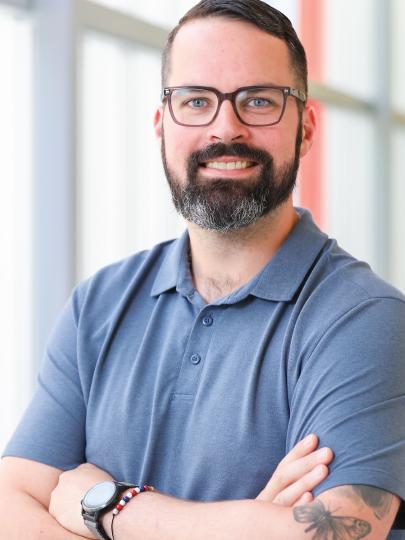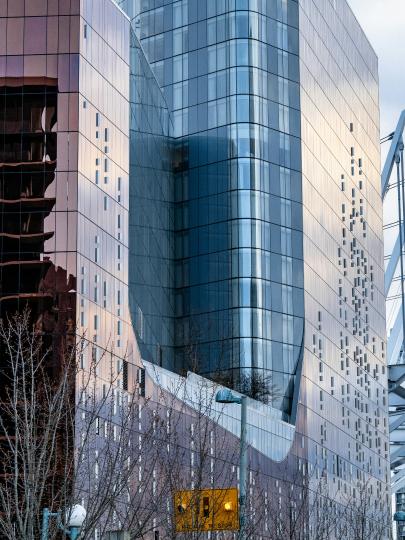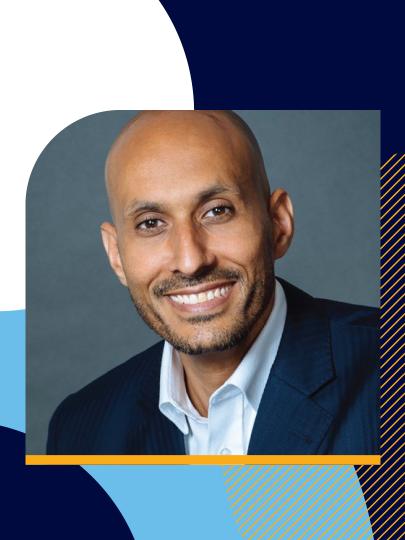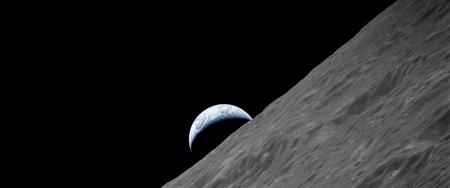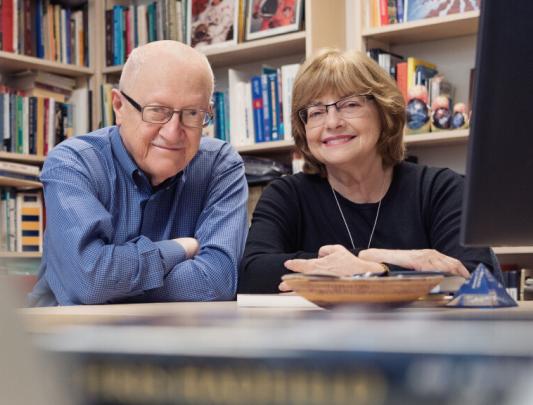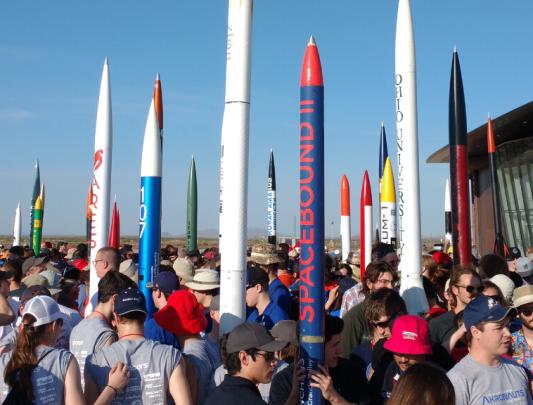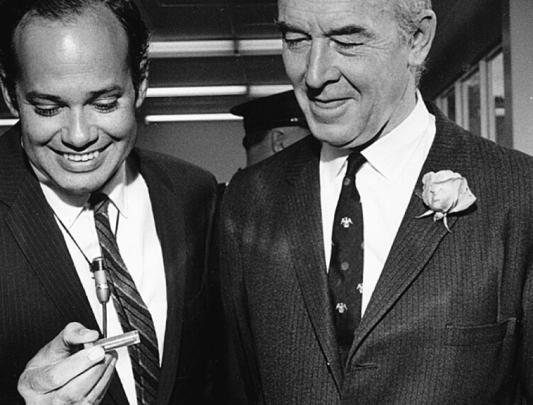The World Famous Physician
As far as science celebrity goes, little compares with contributing to America’s moonshot – the Apollo 11 capsule that touched down on our lunar satellite on July 20, 1969. As flight surgeon for the mission, Bill Carpentier, MD’61, garnered a level of historical immortality few achieve in their field.
A pilot and specialist in aviation medicine, Carpentier’s resumé seemed tailor-made for attending to astronauts. But it was his swimming prowess, of all things, that set him on the path to becoming “America’s most famous doctor.”
Soon after arriving at the Manned Spacecraft Centre in Houston, Texas, in 1965, a 28-year-old Carpentier was settling in to finish his medical residency and become a flight surgeon trainee for NASA. With the Gemini program in full bloom, and NASA transitioning from military oversight into a civilian organization, there was no shortage of potential adventure.
One of the spots up for grabs was that of recovery physician for the Gemini capsule. As part of the helicopter crew responsible for snatching astronauts from the water after splashdown, the recovery physician would work with the Underwater Demolition Team (UDT) to address any emergency medical needs – even if it meant jumping into the water and treating the crew in a churning sea. But the physician that had been assigned to the next Gemini mission was not quite up to the task.
“So my boss said to me, ‘Weren’t you a swimmer in college?’,” Carpentier recalls. As luck would have it, he had swum competitively, and underwent scuba training during his residency at Ohio State. “At that point in my life I didn’t think there was anybody in the world that was a better swimmer than I was. I said I’m not just a swimmer, I’m a damn good swimmer. He said ‘Would you be willing to jump out a helicopter and give medical treatment if needed?’ And I said you bet! What could be a better job than that? Yeah, let’s go!
“And that’s what it was like at NASA in those days. There were jobs to do, there was something to learn. They’d ask, ‘Can you do this job?’ And if you said yes, then you just did it, and you better do it well.”
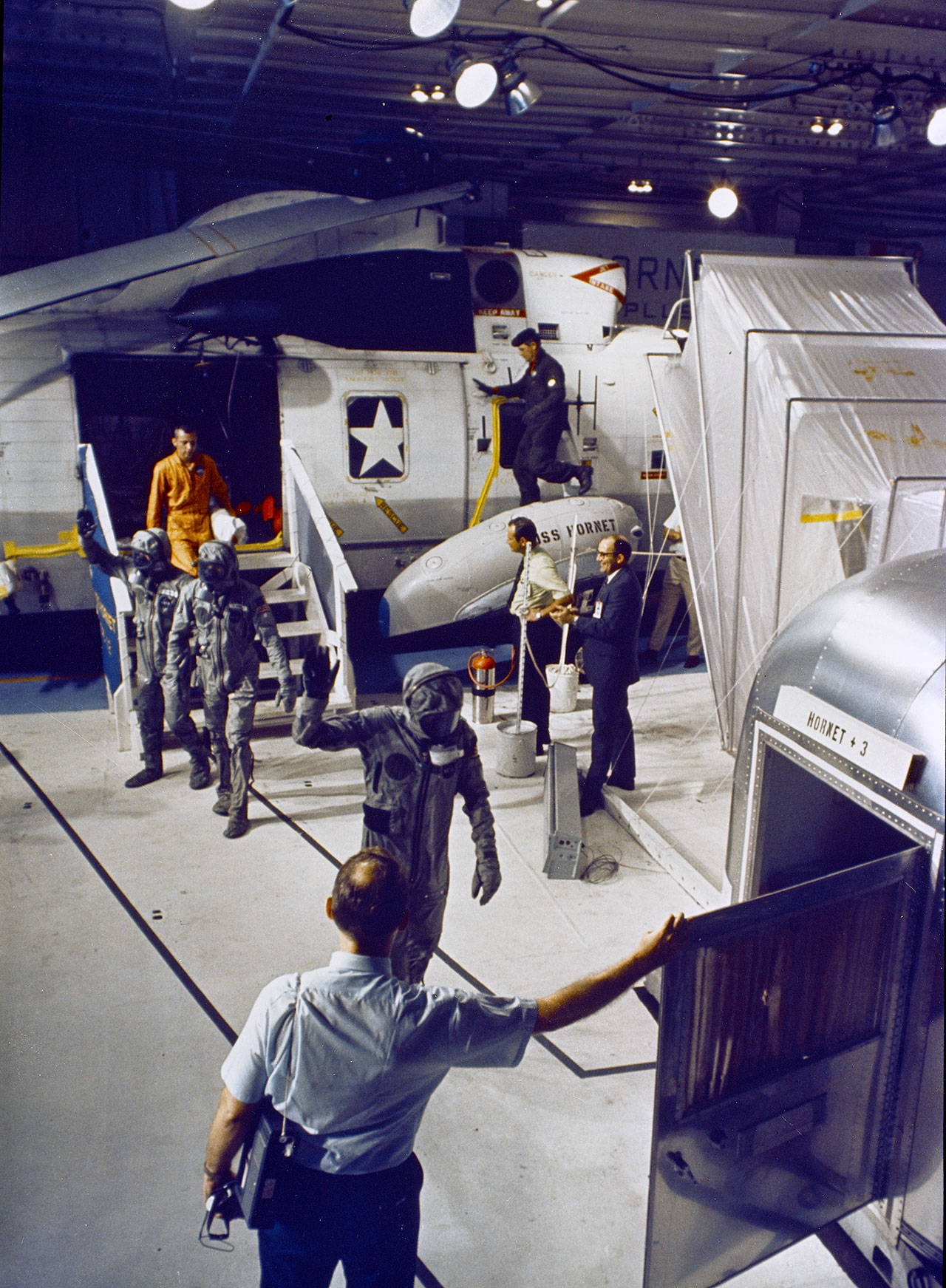
Carpentier was always up for a new adventure. Born in Edmonton, he moved to Vancouver Island in 1945 when his father returned from World War II after five years with the Canadian Army. Facing sparse prospects in Alberta, he resettled the family in Lake Cowichan to work the sawmills and be closer to his brothers.
Despite the smallville atmosphere of a logging town, Carpentier nurtured a deep curiosity about the outside world – particularly the idea of becoming a pilot – more than once considering a career in the military. While studying engineering and physics at nearby UVic, he spent his summers working for the Canadian Pacific Steamship Company, moving from job to job with each new opportunity – mess boy, freight loader, waiter, assistant purser. “I worked for them many summers,” he recalls, “because I like going to sea, I like being on the ocean. It was a great job – anything that they had open, I applied for.”
Although most of his income went to college expenses, he saved enough for flight training, earning his private pilot’s license by taking one-hour lessons in the small window of light left after working a 12-hour shift each day.
His interests eventually turned to medicine, earning him a spot at UBC’s medical school. In his fourth year he met Wilma Sloan, a nurse trainee who was also studying at UBC, and by the following summer they were married and off to Ohio State, where Carpentier took up a two-year residency program in aviation medicine.
A researcher at heart, he seemed destined for academia, planning to earn his PhD at McGill University in Montreal. But only months before leaving Ohio, with Wilma already jusqu’au cou in French lessons, he received a call with the question of a lifetime. NASA’s Manned Spacecraft Center was instituting a third-year training program in aerospace medicine, and would he like to apply.
“I said, Would I like to apply?” he recalls. “My god, would I like to apply? I would really, really, really – four hundred times really – want to come down, but I’m on an exchange visitor visa. I don’t have a green card.”
But four little words on the other end of the phone changed Carpentier’s life: “We can fix that.”
After six months of investigation by the RCMP, the US State Department, and the FBI, he had his security clearance in one hand and his green card in the other. In January 1965, Bill and Wilma hopped in their little car, and off they went to Texas.
The timing couldn’t be better. NASA, only seven years old, was wrapping up the Mercury program that sent the first Americans into space, and with the Apollo missions only four years away, the Moon was as incredibly near as it was incredibly far.
But shortly after he was assigned as recovery physician for the Gemini capsule, he hit another snag. The US Navy insisted he learn to conduct rescue jumps, and within days he found himself staring into the Gulf of Mexico from a Coast Guard helicopter.
Carpentier had been told by outgoing flight surgeons that the UDT teams – the predecessors to the Navy Seals – could jump out of a helicopter at 40 knots from 40 feet in the air, and he wanted to prove he was up to the task. The pilot refused, deeming it too risky, but Carpentier insisted. There would be no rescue buddy in the water with him. No life preserver, no scuba gear, nothing but a wetsuit jacket for flotation. He knew that if he had to go into the water for a Gemini splashdown, he had to be unencumbered to aid the astronauts, and then squeeze himself into a horse collar to be hauled back up to the helicopter. He didn’t want an actual rescue mission to be his first time.
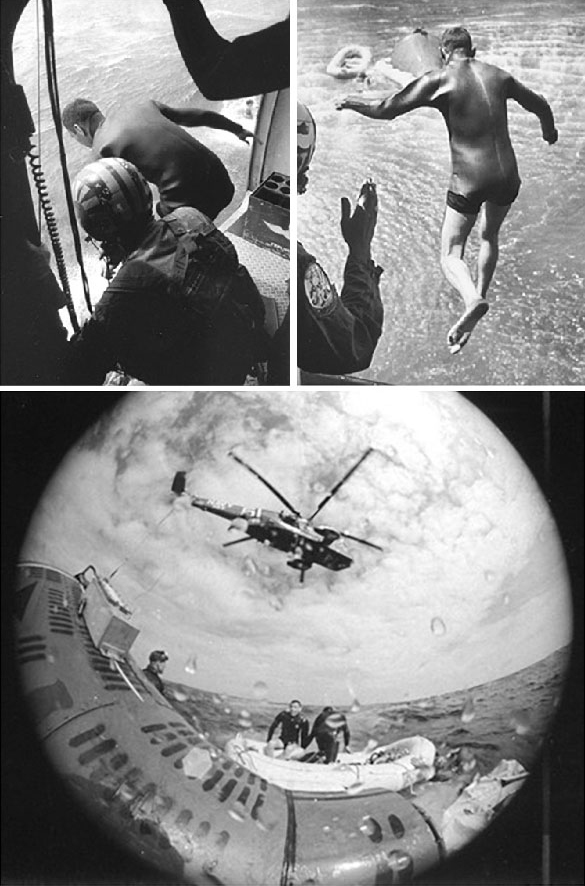
Carpentier was always up for a new adventure. Born in Edmonton, he moved to Vancouver Island in 1945 when his father returned from World War II after five years with the Canadian Army. Facing sparse prospects in Alberta, he resettled the family in Lake Cowichan to work the sawmills and be closer to his brothers.
The pilot conceded to starting slowly and working their way up: 10 feet high at 5 knots. 15 feet at 10 knots. 20 feet at 15 knots. “At 25 feet I was hitting pretty hard,” he remembers. “So I said, ‘Look, we’re gonna be here all day long, let’s just do it. Go at 40 feet and go 30-40 knots and I can say I did it.’ So we did it. I jumped out and I hit with a pretty big bang. But I was fine, I lived through it, and they hauled me back up.”
When Carpentier later met the UDT team on the aircraft carrier, the senior officer looked down at him and asked, “Have you ever jumped out of a helicopter before?” Carpentier told him he jumped 40 feet going almost 40 knots. The officer looked at him like he was crazy. “You did what!?”
Carpentier had been misinformed. None of the military swimmers had ever made a jump that dangerous. Rescue helicopters usually hover in place at under 20 feet.
Shortly after he was assigned as recovery physician for the Gemini capsule, he hit a snag. The US Navy insisted he learn to conduct rescue jumps, and within days he found himself staring into the Gulf of Mexico from a Coast Guard helicopter
But now fully trained for recovery missions, he could settle into his primary role of studying the effects of space travel on human physiology, particularly the little‑understood issue of weightlessness. The longest flight so far was Gordon Cooper’s 34-hour orbit, but future missions would call for days in space, and the moonshot would take two weeks.
Splitting his time between the lab and the sea, Carpentier alternated between charting the effects of weightlessness on linear graphs and practicing recovery operations on an aircraft carrier, where he trained with the UDT personnel for every imaginable scenario, from hooking up an IV to administering CPR – all on a pliable raft in a six-foot ocean swell.
“I thought to myself, Are they going to be able to make it?” he recalls. “What am I going to do if they are in serious trouble? How am I going to handle myself? What is the worst scenario that I can think of, and what am I going to do about it? When you’re that age and in that kind of job, your main concern in life is don’t screw up. That was my main concern from the time I got up in the morning till the time I went to bed at night. Don’t screw up.”
Lucky for all, he never had to put the training into practice; his Gemini assignments all brought back healthy astronauts. As Gemini wound down, he was assigned to pre-flight medical care for the Apollo missions, travelling around the country to monitor the crew as they prepared for the trip of their lives.
Somewhere in the haze, Bill and Wilma managed to have children, both boys, born in 1965 and 1968. Wilma went all-in on her education, earning her undergraduate and master’s degrees, and her PhD, during their stay in Texas. It’s hard to imagine, even in retrospect, that between the travel, the training, the work, the classes, the marriage, and the diapers, somewhere you had to fit a moon landing into your schedule.
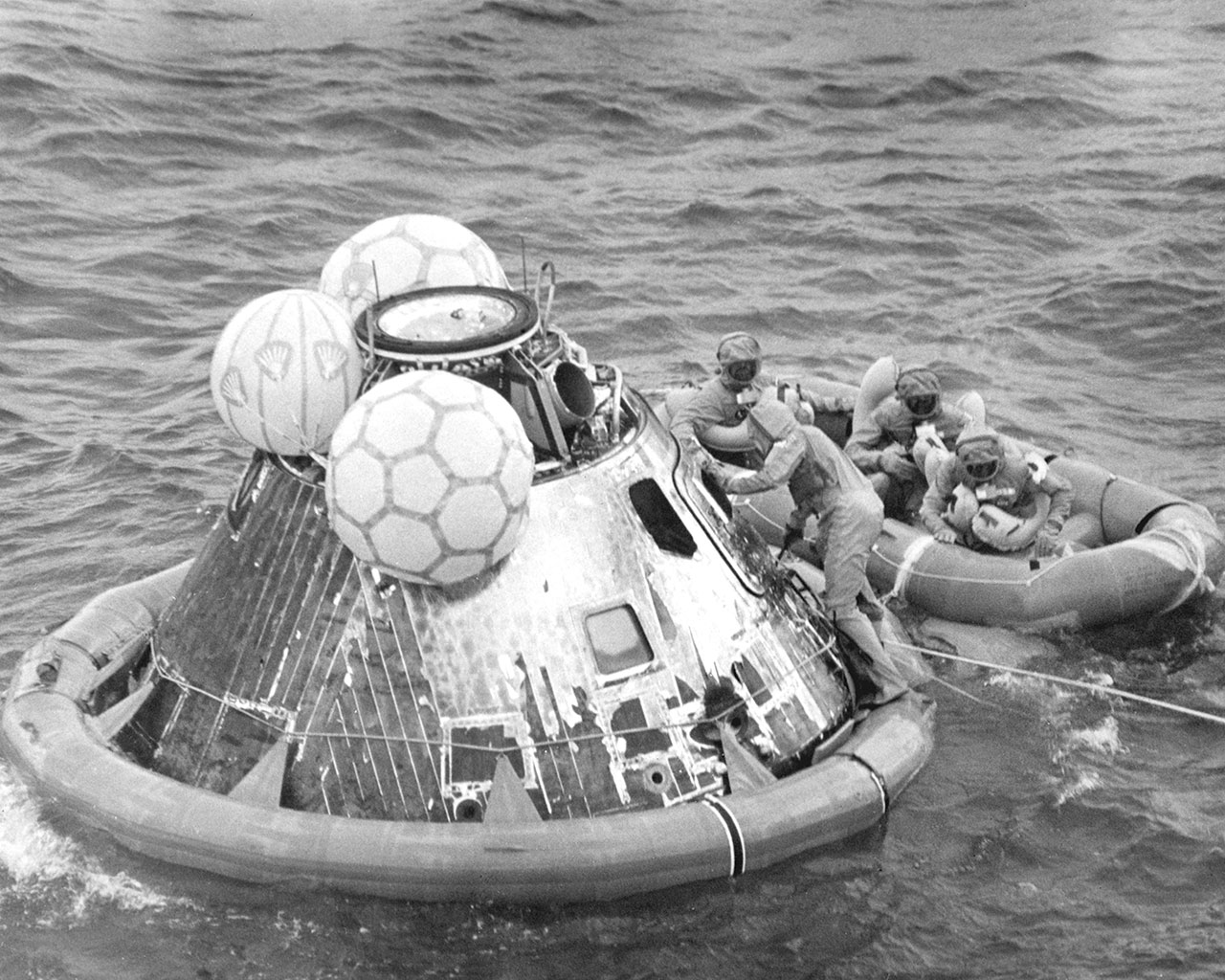
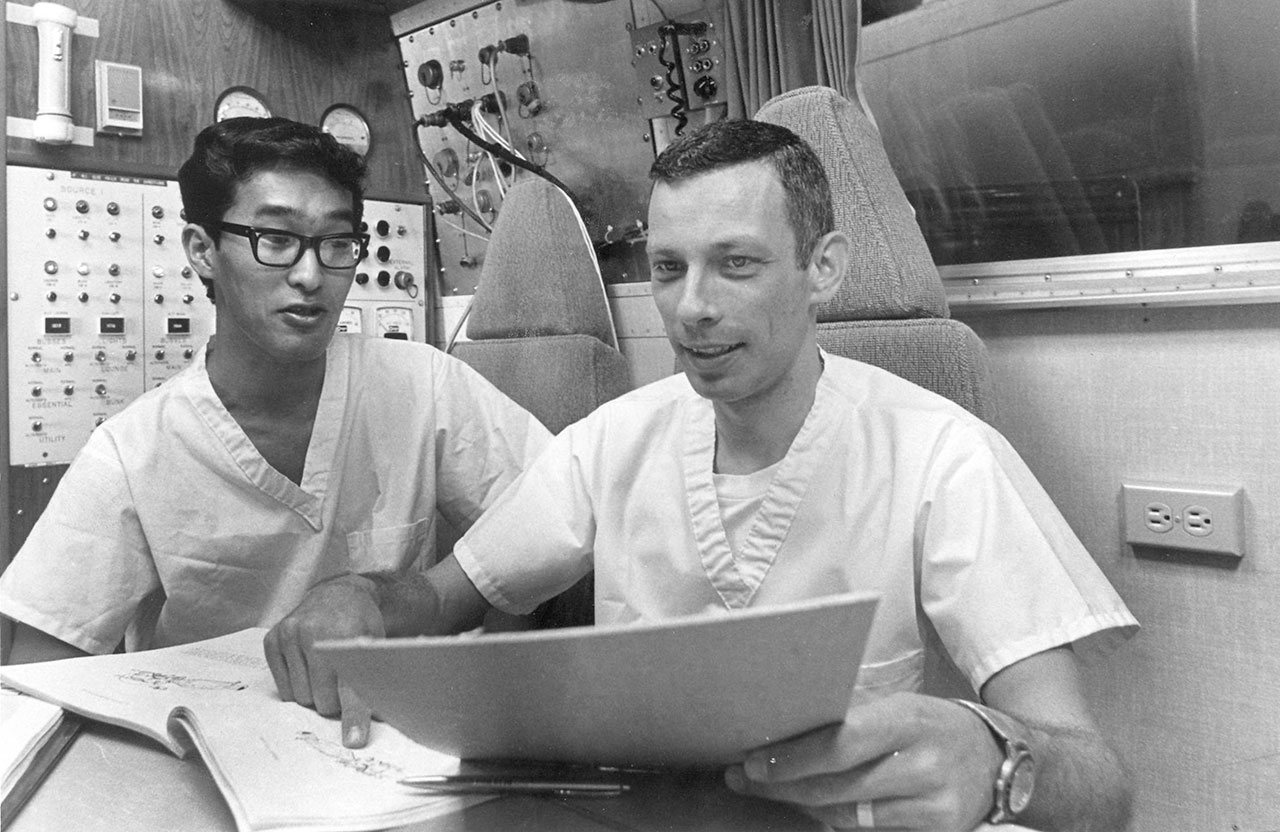
“Zero dark thirty” is what soldiers call it when your alarm goes off and there’s not a sliver of light in the sky. On July 24, 1969, – three days after the first human stepped onto the surface of the Moon – Carpentier greeted the wee hours aboard the aircraft carrier USS Hornet, ready to fish Armstrong, Collins, and Aldrin from the middle of the Pacific Ocean. The lunar command module splashed down before dawn, and by the time the Sun filled the morning sky, the doctor and his patients exited the retrieval helicopter in full biological isolation suits on their way to over two weeks of seclusion, starting in NASA’s Mobile Quarantine Facility (MQF), a converted Airstream trailer.
So as not to accidentally infect the astronauts with any fresh bugs, Carpentier had already spent a week in the MQF with project engineer John Hirasaki, who was responsible for testing the equipment and samples in the spacecraft that had been hauled aboard the ship and attached to the MQF. Carpentier remembers the daily routine as surprisingly businesslike, considering what had just been accomplished. Hirasaki packaged the lunar samples and cooked the meals. Carpentier conducted daily exams of the crew and served as bartender. After caring for the crew, Carpentier’s most pressing duty was to swab the inside of the capsule to test for biological contaminants. It was believed the possibility of contagion was remote, but NASA’s Committee on Back Contamination had established the Extra-Terrestrial Exposure Law to keep Earth safe from potential outer‑space pathogens.
There were none – another lucky break for Carpentier, who accidentally inhaled a lungful of moon dust. “As soon as I opened up the suit bag, I got lunar dust on me,” he remembers. “Lunar dust is very fine, almost like talcum powder. It has a distinctive smell – sort of a combination of gunpowder and ashes. There was a small cloud of dust on both suits, which I got in my nose and my eyes. It was very irritating.”
After two more days aboard the Hornet, the MQF was flown back to Houston, occupants and all, where they were moved to a larger facility and joined by technicians and support personnel who had sealed themselves in the previous week. The crew had a television, a ping-pong game, a pool table, exercise equipment, and books to pass the time, but their days were dominated by mission debriefings, report writing, medical exams, blood tests, and constant monitoring.
“Lunar dust is very fine, almost like talcum powder. It has a distinctive smell – sort of a combination of gunpowder and ashes. There was a small cloud of dust on both suits, which I got in my nose and my eyes. It was very irritating.”
They did not particularly enjoy the confinement, and after eight days in a space capsule, the desire to hold their families and breathe fresh air was understandable. Not even a week into their quarantine, they were asked by the press through a glass wall how they were enjoying their time in the receiving laboratory. Armstrong mustered a sportsmanlike response: “About as well as you can expect.” Collins said “I want out.”
But it was the calm between two storms. They had just accomplished one of the most significant feats in human history, and the world was not going to let that go without a party. On August 10 the quarantine was lifted, and the astronauts soon embarked on an international “Giant Leap” tour. Carpentier, suddenly a global celebrity, was deemed “famous enough” to join them, and on Air Force One manifests was listed as “WFP” (World Famous Physician).
“That’s hard to imagine,” says Carpentier, “a kid growing up in the middle of Vancouver Island in a logging camp, flying on the president’s airplane with the first guys that walked on the Moon. Going to major cities around the world, going to state dinners and meeting presidents, prime ministers, the King of Siam, an audience with the Pope. Incredible. Holy crap. That was something I was not trained for.”
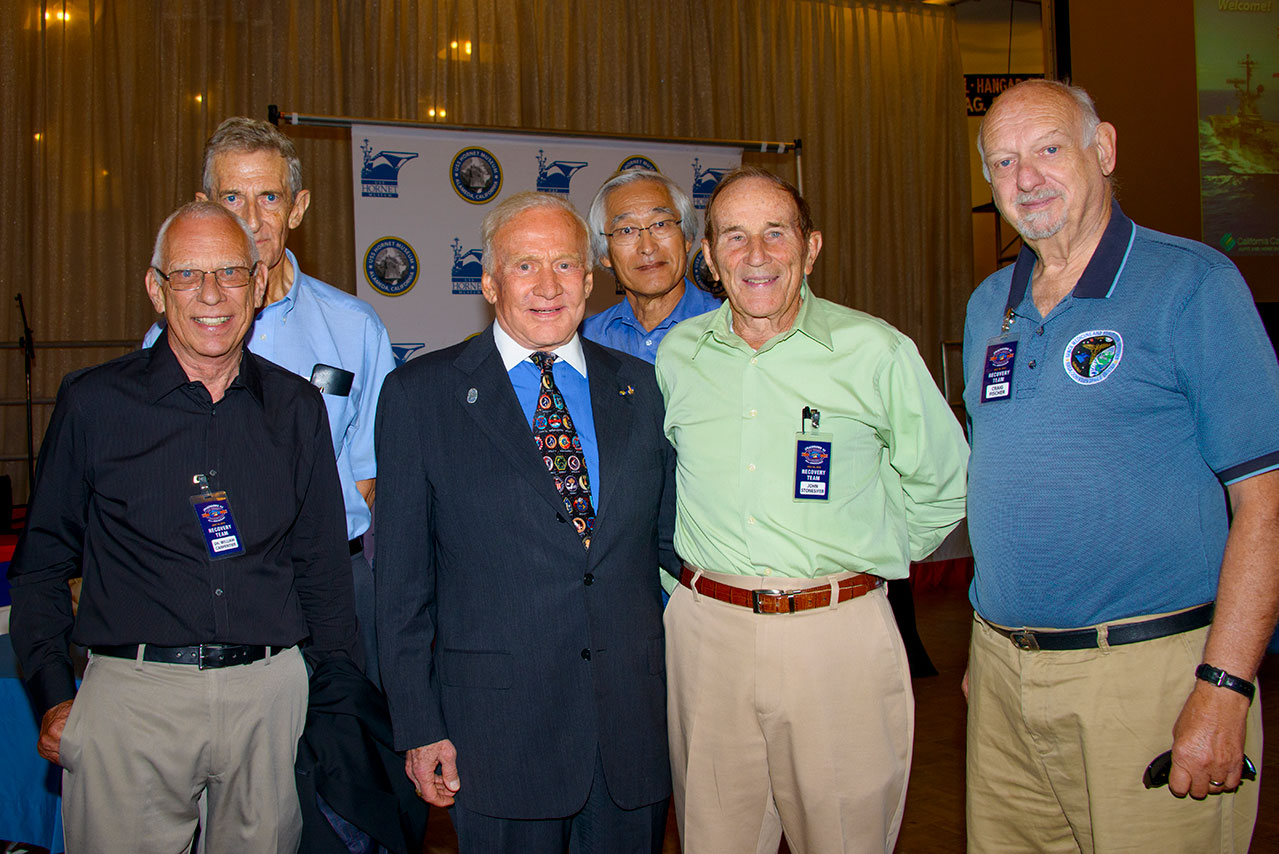
It was also the first significant social time Carpentier spent with the astronauts. Normally absorbed in the stressful and risky business of their missions, now they were celebrities on tour, allowing Carpentier to see them in a new light – particularly Armstrong, whom he had always regarded as an older brother figure. “In Spain, he made remarks in Spanish,” Carpentier would later say at Armstrong’s memorial service. “We didn’t know he spoke Spanish. In France, he made remarks in French. No matter where we were, he always had something important to say about that country’s history. He was undoubtedly the best-read person I ever met.”
After a whirlwind 38-day tour, however, Carpentier was soon back at work. By this time, Apollo 12 had already gone to the Moon and back, and Apollo 13 was gearing up for a spring launch. Carpentier would resume his regular duties with the Apollo 14 crew, but not before having a front‑row seat for one of NASA’s most memorable sound bites: “Houston, we have a problem.”
When the Apollo 13 command craft was crippled in an explosion in April 1970, the crew limped home in their lunar module, which could only supply half of the oxygen the astronauts would need for the four-day trip. Carpentier and the medical team scrambled to calculate the buildup of carbon dioxide while engineers devised a stop-gap solution to stretch the breathing supply until they reentered the atmosphere, a tense period millions of others would eventually share watching the film Apollo 13.
“It was just like it was in the movie,” Carpentier later told the Canadian Space Agency, “that long silence, the blackout period that went on longer than on other flights. Maybe they haven’t made it. Maybe we’re never going to hear from them again. You think all of those things. Then, when they did, the place just erupted.”
In one sense, Carpentier’s time at NASA ended after the Apollo program. He had accomplished in the department’s most historic decade more than most people do in a lifetime. More interested in studying medicine than becoming management, he left NASA for a residency at Baylor University, then spent the next 30 years working in nuclear medicine at Scott and White, a private company in Temple, Texas.
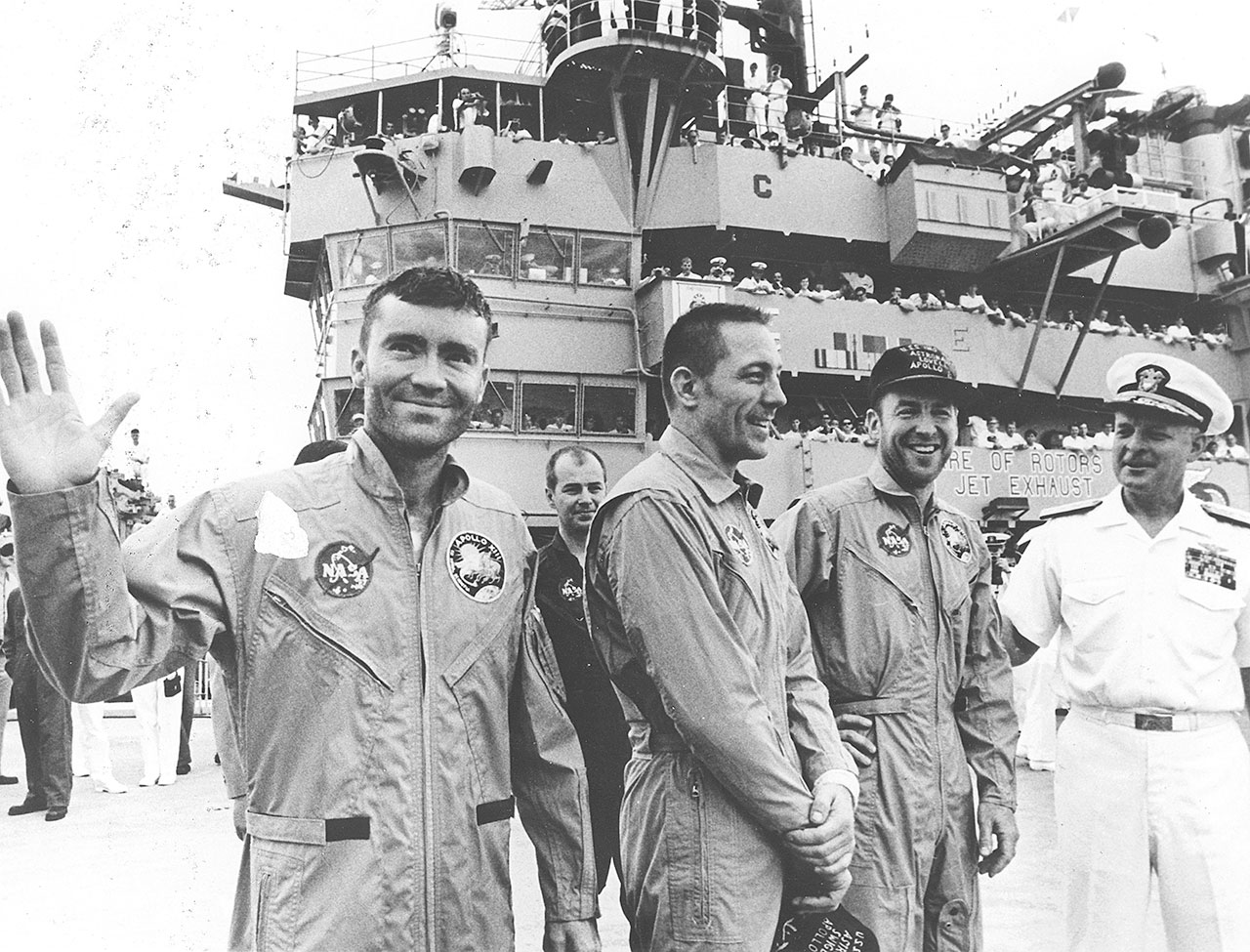
In another sense, this was just his first chapter. More than a flight surgeon, Carpentier was a powerful voice for the health of the astronauts, recording enormous amounts of physiological data to make future missions safer. He continued working as a part-time consultant for NASA, administering radiopharmaceuticals to crew members and collecting data on future programs such as Skylab and the space shuttle.
When the Apollo 13 command craft was crippled in an explosion in April 1970, the crew limped home in their lunar module, which could only supply half of the oxygen the astronauts would need for the four-day trip. Carpentier and the medical team scrambled to calculate the buildup of carbon dioxide while engineers devised a stop-gap solution to stretch the breathing supply until they reentered the atmosphere, a tense period millions of others would eventually share watching the film Apollo 13
While he will be remembered for his contributions as a doctor, it’s his data that will endure. Nearly five decades after he began collecting detailed physiological information from the astronauts, he is still compiling the records into a book.
“It sort of tells a story, but it’s exploring the data and my feelings of what can be learned and where do we go. My whole purpose is to be able to document everything that went on during the Mercury, Gemini, and Apollo programs and do an integrated analysis. It’s valuable information that is never going to be repeated. I’m done with Mercury, I’ve almost finished Gemini, I’ve got most of the data for Apollo, and I’m just gonna keep going, documenting everything from flight to flight to flight, as long as I’m able and as long as NASA will let me.”
“All I got to do is live six more years to finish my projects and I’ll be a really happy guy,” he laughs. Although still in Texas, he summers at his cabin on Pender Island, and at 83, goes to CrossFit three days a week. As far as his legacy goes, he’s more concerned with the data than his own name.
“Talking about this over the years, I guess what strikes me most is how bloody lucky I was to live through the golden age of space flight. Five hundred years from now, a thousand years from now, people will look back at the century and say ‘What did those guys do back then, flying to the Moon for the first time?’ It’s going to be one of those things that the 20th century will be remembered for.”


